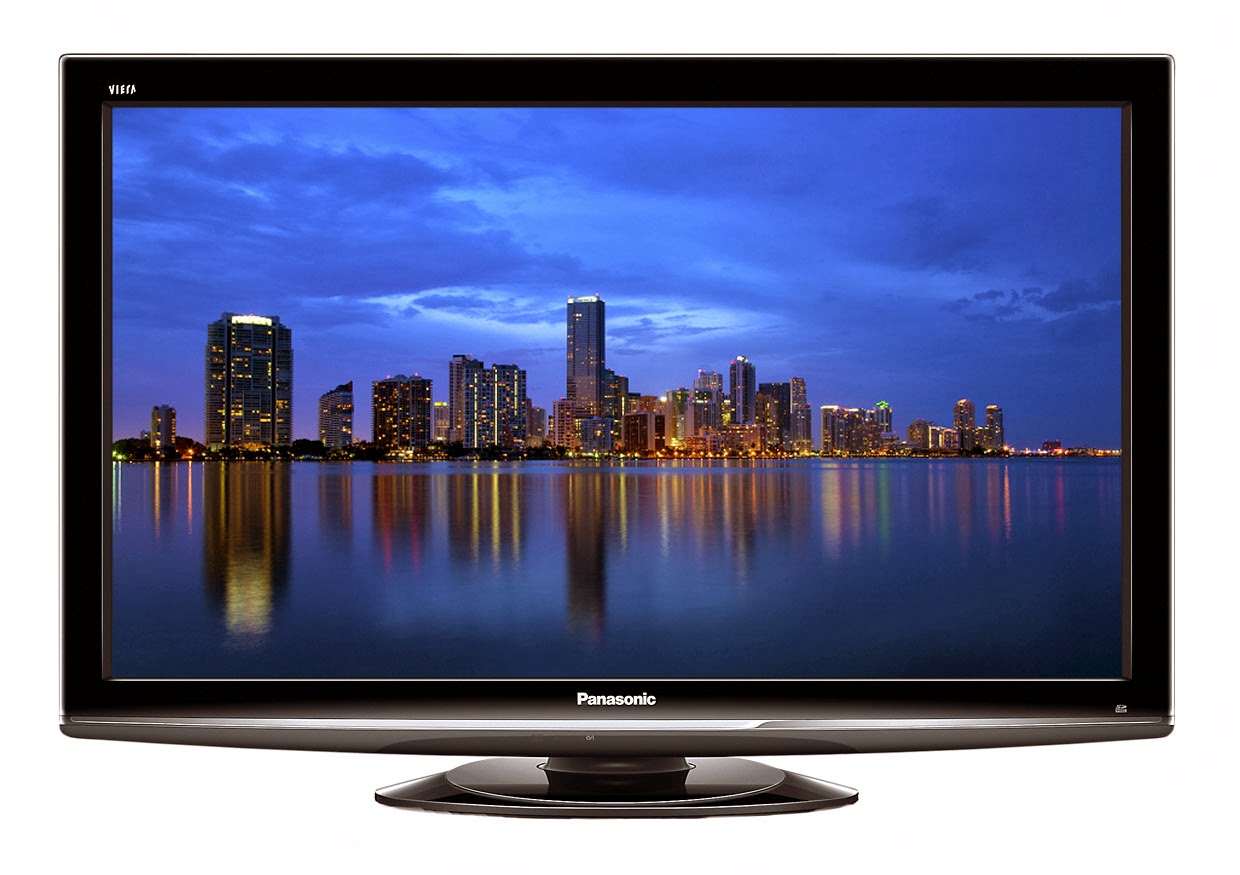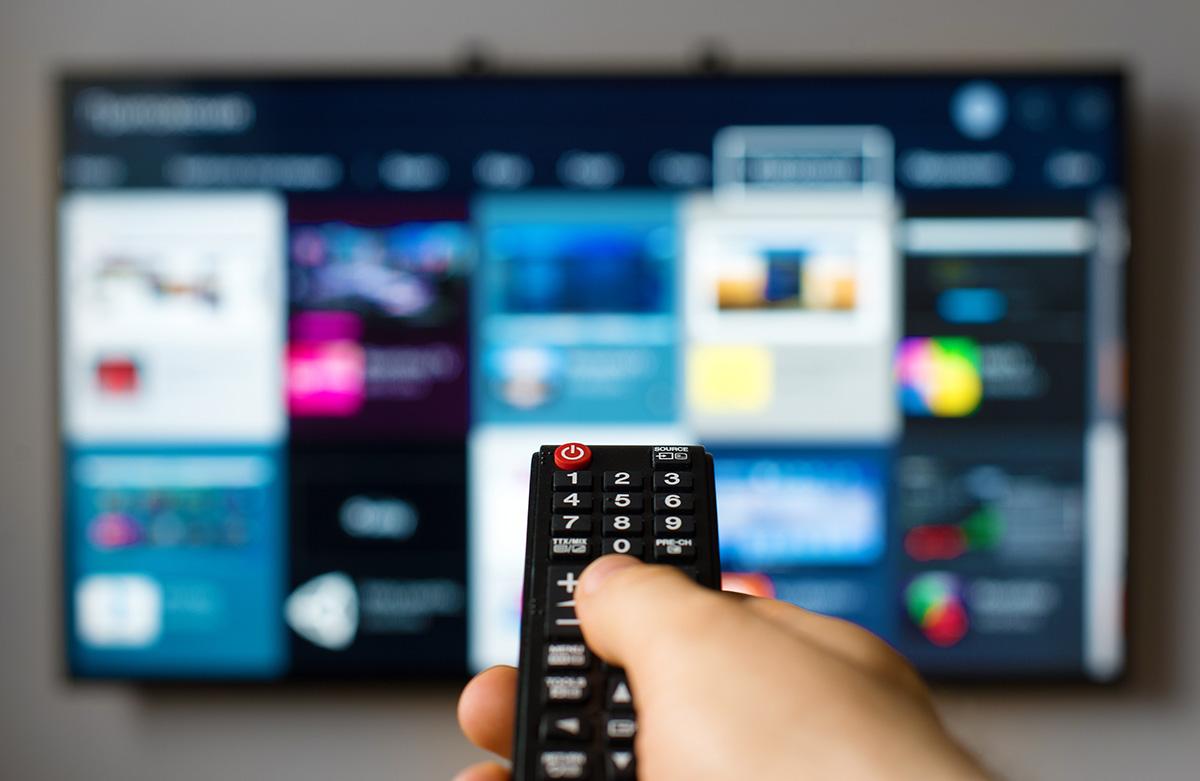We want home theatre to be as good as it ever was at the local cinema. So why are we still watching pictures made up of a few hundred lines?
Do we need digital television? Audiophiles have, with reason, become wary of the common assumption that everything digital is naturally superior to "old" analog. Why would TV images look any better simply because the signal had been reduced to a series of numbers before transmission?
Yet, there is a promise that digital TV will be better, because the digital format has become enmeshed with an improvement we've been awaiting for years, namely HDTV -- High Definition Television.
And we do need HDTV. The present NTSC system (in North America and some other countries, PAL and SECAM elsewhere in the world), with its 525 lines, seemed perfectly adequate back when a "big" TV set measured 21 inches corner to corner. Today there are projection TV screens that measure over 70" (178 cm), and the grid of scanning lines is starting to look rather coarse. Sure, a typical mid-priced set boasts circuits with 900 line resolution, but no station was transmitting that.
Until now.
Digital video first appeared at television stations. A number of news gathering services are using digital camcorders, which offer higher resolution than the Betamax system that is still the majority standard. And perhaps you've seen, or at least glimpsed, a digital domestic camcorder. It uses a different digital standard, and it has been slow to spread, because a digital unit costs something like $3000...as much as six times the street price of a conventional camcorder. All of these products, however, are compatible with existing television systems, and produce the same number of lines. They are limited to a theoretical 525 lines, though they come closer to achieving it than conventional gear does.
But soon there will be a new standard.
The next generation of television sets will be completely different. The signals they pick up off air will be digital, not analog. Transmission will be made at a much higher frequency. The new sets will not be able to pick up present-day channels, nor will conventional TV sets be able to decode the new signals. The plan in the United States (with Canada and other NTSC countries following) is to allow digital television to develop, and then to kill off conventional TV, perhaps within six years. But if you've just bought a big screen TV don't panic, because that schedule could be mere fantasy.
Compatibility
Wasn't HDTV supposed to be compatible with conventional television? That was certainly the plan that the US was following. A conventional NTSC signal would be transmitted on one of the familiar channels (2 through 69), with the usual 525 lines; extra information would be transmitted on a separate channel. Conventional sets would go on working as usual, and HDTV sets would integrate the two signals to put together a picture with 1050 lines.
Some cynics outside the USA wondered whether the compatibility issue might be hiding an agenda -- that of holding off competition. At the moment the world is separated into three different and incompatible TV systems. HDTV might be a way to let everyone use the same system, but tying American HDTV to the old NTSC standard would perpetuate the division. Europe and the other regions using PAL and SECAM (with 625 lines, note) could not adopt US HDTV. What's more, Europe, which then appeared to be moving toward HDTV faster than North America, could not flood the US with their high definition programs, since they wouldn't be compatible. Indeed, since they would have a different number of lines (probably 1250), and a different number of frames per second (25, against 30 for North America) they couldn't even be transferred to the North American standard without suffering degradation.
But the compatibility plan is more than a decade old, and in the meantime technology has moved on. The HDTV system will be digital, not analog. And that makes downward compatibility impossible.
"Advanced" television
That's the official name of the new digital system, and there's a reason the name ATV has been used instead of HDTV: "advanced" doesn't necessarily mean high definition.
In broadcasting circles, there is considerable resistance to HDTV, and it is easy to see why. Broadcasting in high definition digital will mean a huge investment: new cameras, new studios, new VCR's, new transmitters, new towers, even a new monitor in the station's reception area. How quickly will that investment return? Perhaps not all that quickly. The new big screen sets will be expensive. And although smaller HDTV sets can certainly be built, there are studies supposedly showing that, on a small set, many people can't tell the difference between NTSC and HDTV.
And there are other ways the new digital spectrum could be used.
Even with MPEG-2 compression, an HDTV signal eats up a lot of bandwidth. In the space taken up by a single HDTV channel, you could transmit four lower resolution signals. Those signals could carry specialty pay channels, or even pay-per-view channels. That would earn back the investment in digital faster than sending out super-sharp images most households can't take advantage of.
Equipment manufacturers are curiously reticent as well. They're eager enough to show off their HDTV technology at trade shows such as CES and NAB, but they are less enthusiastic about seducing the public with HDTV. The reason: people might get the idea that HDTV is right around the corner, and stop buying conventional TV sets. That might be all right if HDTV really is right around the corner, but that will be determined by the broadcasters, not the set makers.
Interestingly enough, the Federal Communications Commission, the agency which regulates television, is neutral on HDTV. Broadcasters will have to send out signals on those channels -- "use it or lose it" -- but those signals don't have to be HDTV. So who knows what will happen?
Cable and satellite
Is there room on the distribution system for high definition signals? There's no technical reason space can't be found, but that space is already at a premium. With the explosion of specialty channels, we are moving toward the "500-channel universe" on a 200-channel distribution system. The spread of fibre optic systems will increase the bandwidth, of course, but there will be other services competing for space along those fibres, including telephone links and high speed Internet access.
Things are even more crowded on direct-broadcast satellites. And at the very least, present-day home dish systems won't be compatible with ATV, whatever form it takes. The irony is that viewers may wind up getting far better resolution from off-air broadcast TV than they do from their expensive dishes.
That problem will of course be solved...because if HDTV takes off it will have to be solved.
The computer connection
It probably hasn't escaped your attention that the many distribution networks are coming together. Your phone company and your cable company both offer Internet service, and before long the cable company will offer you phone service too. As the Internet "pipeline" gets fatter, you'll be able to get video signals that way as well. Cable, the phone and the Internet will become one.
Naturally, this hasn't escaped the attention of Bill Gates and his ubiquitous Microsoft Corporation. Computers already have digital high resolution monitors, so Bill (and some other CEO's of computer technology companies, such as Compaq) can see the possibility of HDTV coming in on the computer rather than on the TV.
But not if HDTV has 1050 lines, because that's more than a computer monitor can handle. So the computer people would like, at most, 720 lines. Their argument: millions of people already have computers, whereas no one yet has an HDTV set. By using the (Microsoft) pipeline, broadcasters could get their mass audience from day one.
But would they? The majority of home computers come with 15" screens, a lot smaller than proposed HDTV screens. And computing is a solitary activity -- it's hard to imagine the family breaking out the popcorn and clustering around the computer for a movie.
Unless, of course, your television set and your computer become one and the same machine. Perhaps Bill Gates is seeing further ahead than we are.
Disc and tape
The newest video medium on the scene is of course DVD, which is growing slowly but surely, and may grow a lot faster once DVD discs reach price parity with videocassettes. But the DVD standard is tied to existing TV systems: NTSC, PAL and SECAM.
Could it be adapted for HDTV? Of course, since it is a digital medium. And the DVD itself has tremendous storage space, if you use both sides and two layers per side. But an HDTV version of DVD would require a totally new standard, which would mean buying new DVD players. And that could mean double inventory of films, something that stores and video clubs hate. The problem can probably be solved.
As for the VHS videocassette, it will be left right out of HDTV, because it is analog. A digital cassette system does exist, and you can theoretically buy a digital deck for your home right now, but digital cassettes don't have the bandwidth needed to fit a full-length HDTV movie onto a cassette.
But wait a minute -- can't DVD be recorded on?
Yes, a recordable DVD has been promised "eventually," but it too will lack bandwidth for the huge volume of HDTV information. Commercial discs can be made with two layers, but there is no prospect of that for DVD-R. Besides, two of the inventors of the DVD, Sony and Philips, are also film and record producers. They and their competitors are not keen on a system that can make virtually perfect copies of their digital creations. Imagine the boom in pirated HDTV discs, if they could be made.
So...when?
Good question.
The US government, like the governments of other industrialized countries, is scrambling to balance its budget, preferably without making too many politically unpopular cuts. Extra sources of revenue makes this easier, and the coming of HDTV could bring just such a source.
Here's the plan. Once 85% of Americans have switched to ATV -- whether it is high definition or not -- the conventional NTSC channels will be shut down (which will mean the poorest 15% of the population will have to learn to read, or something), and the bandwidth will be sold off. This will bring billions of dollars, which are already in budget projections as of the year 2004.
Realistic? Probably not, but you can see why the US government is eager for ATV to get off the ground.
It may be less enthusiastic about HDTV itself, and here's the reason. If broadcasters ignore high definition TV and instead opt for low-resolution pay channels, they'll have to pay for the bandwidth they use. That will give the government another source of revenue it wouldn't have if ATV channels were used for free high-definition broadcasts.
Experimental HDTV signals are already on the air in a number of American cities, just as digital radio signals have been on the air for some time. No will sell you a set to receive either one, however, and no one knows when -- or if -- those sets will become available.





